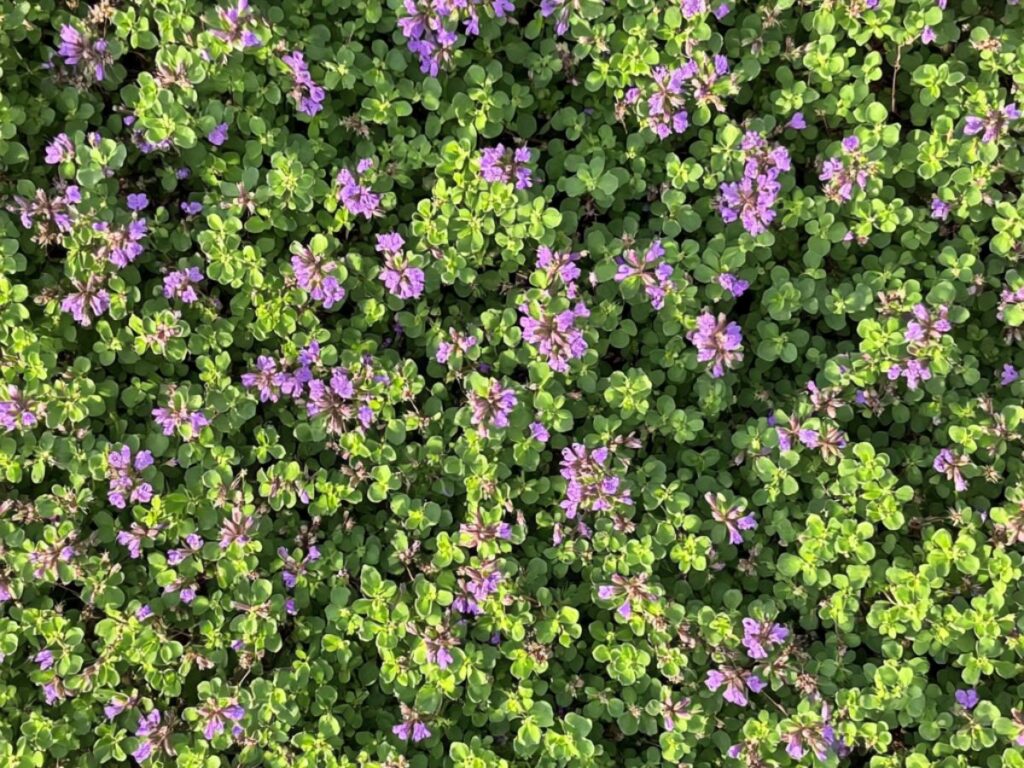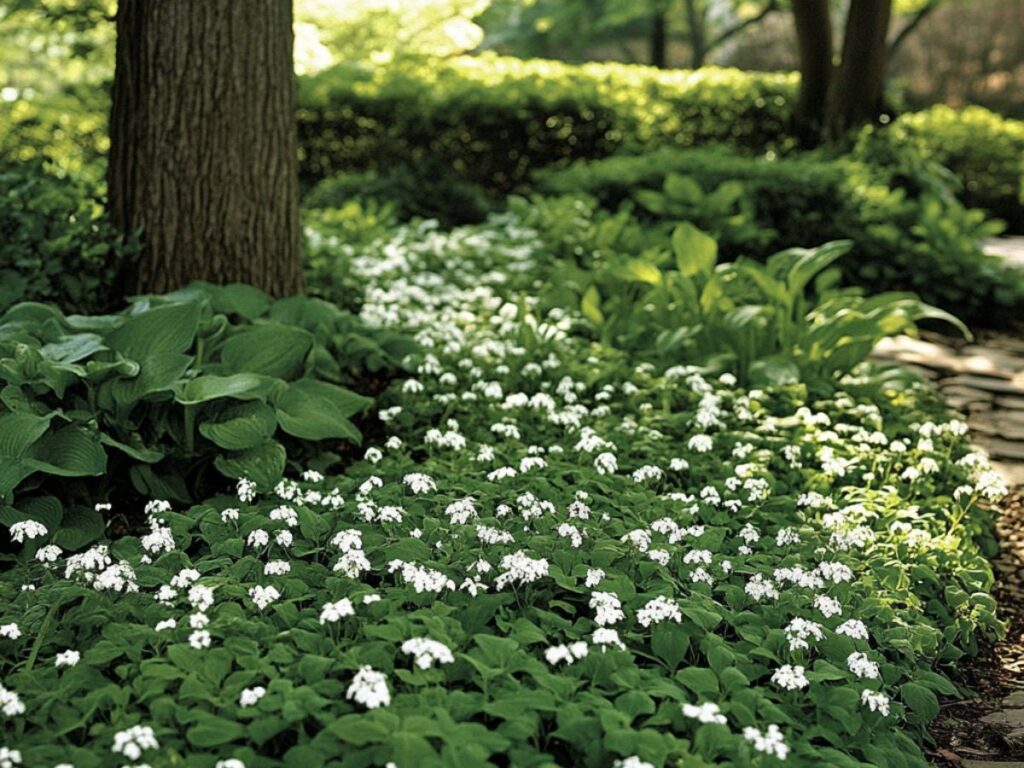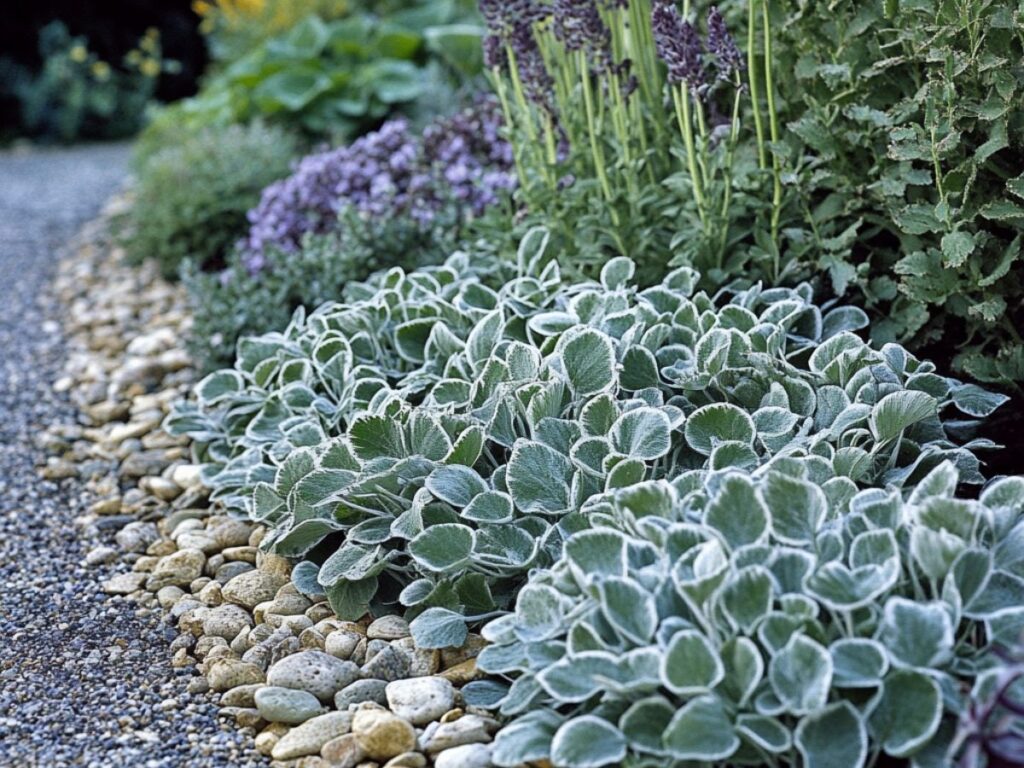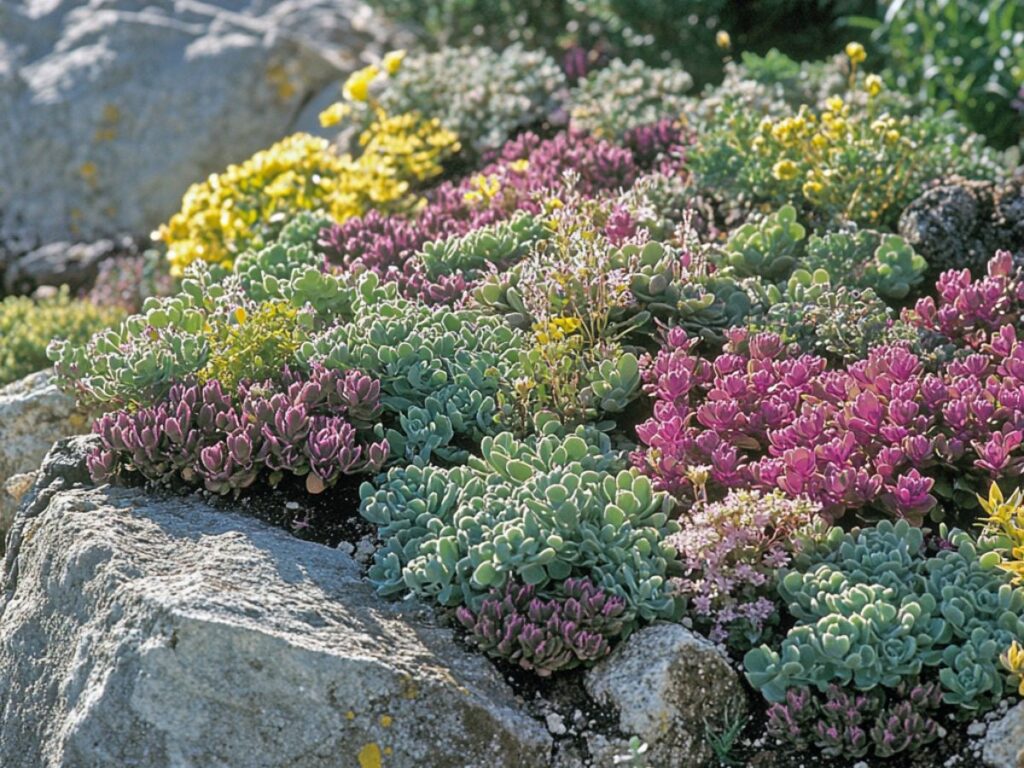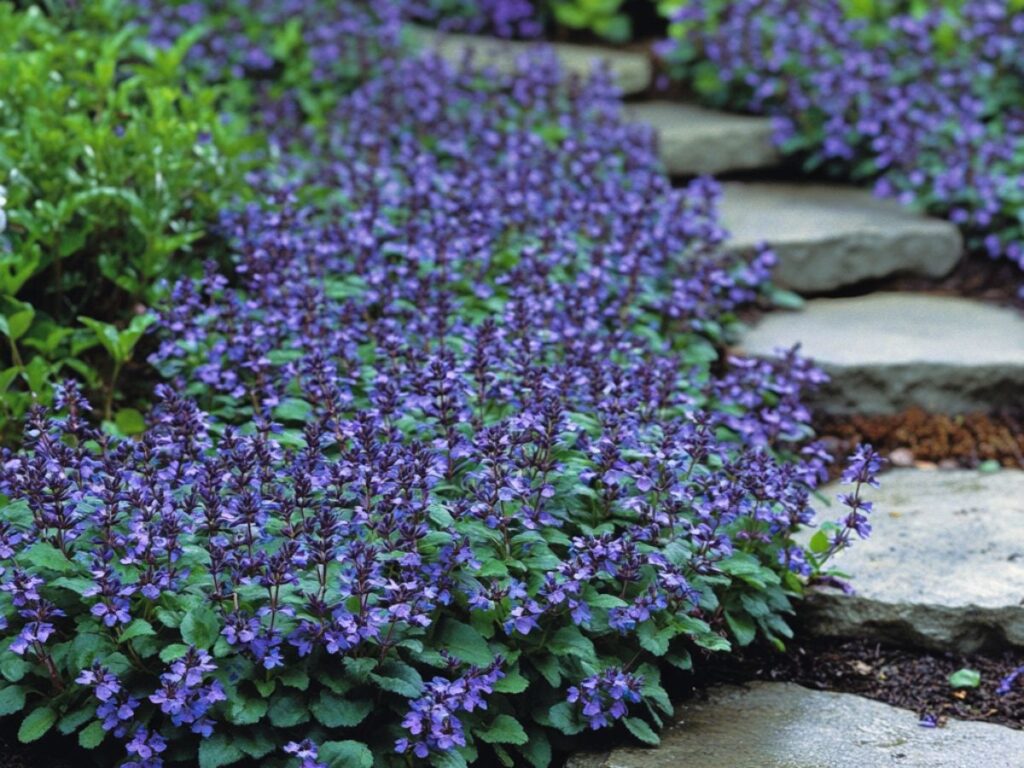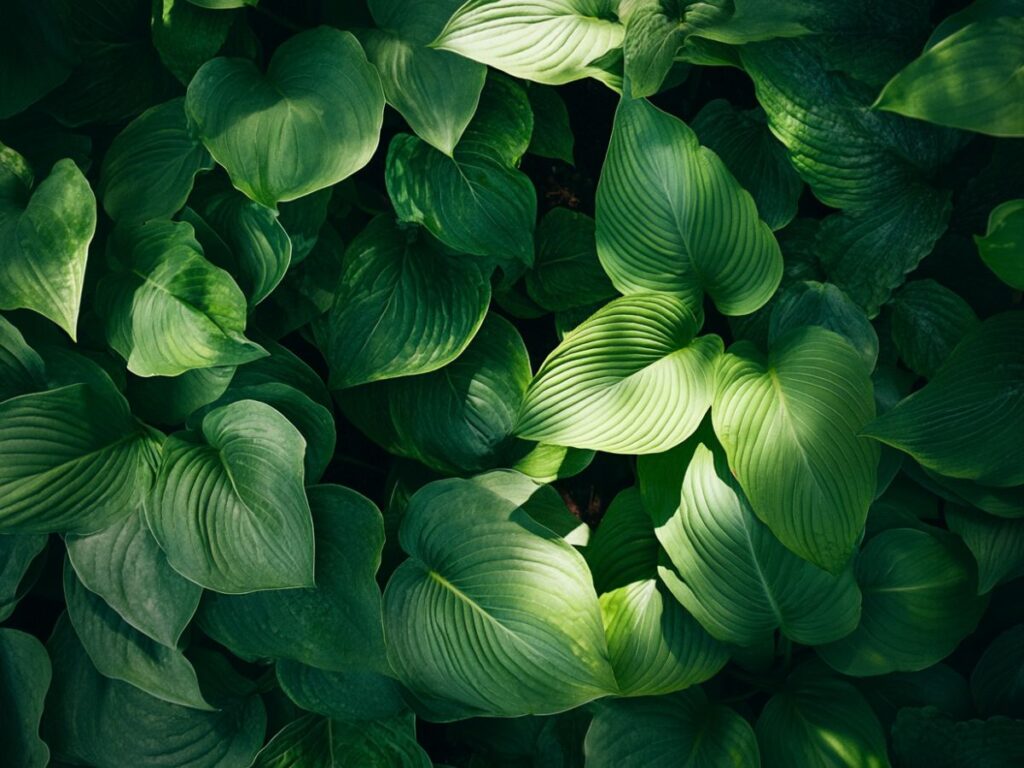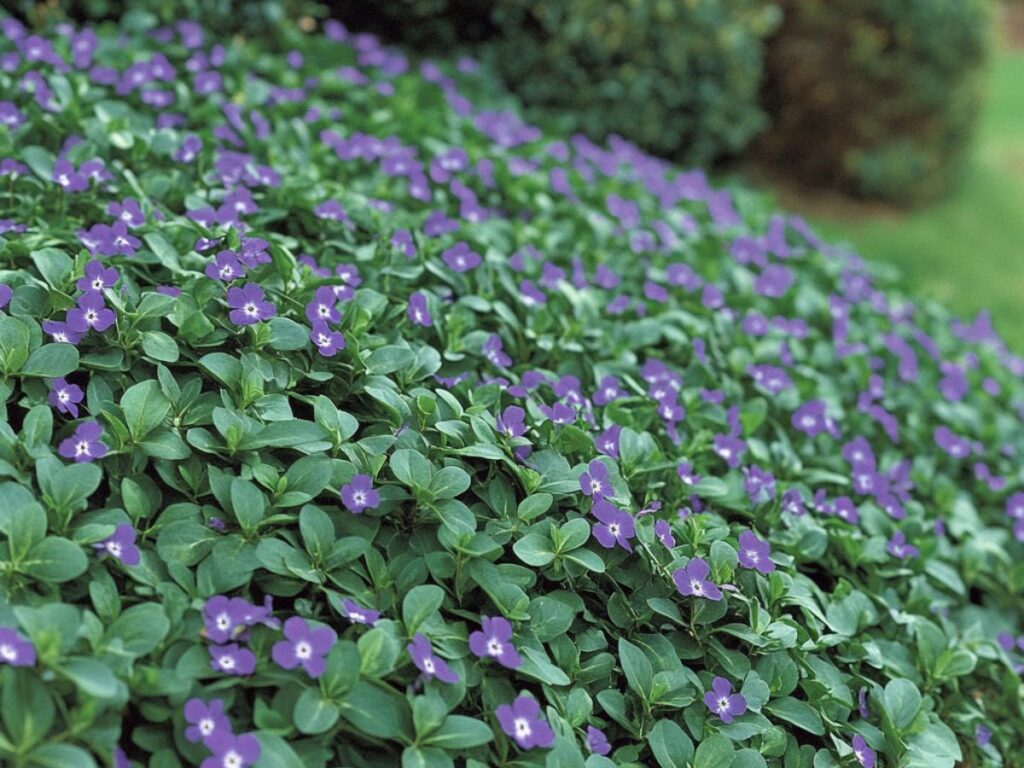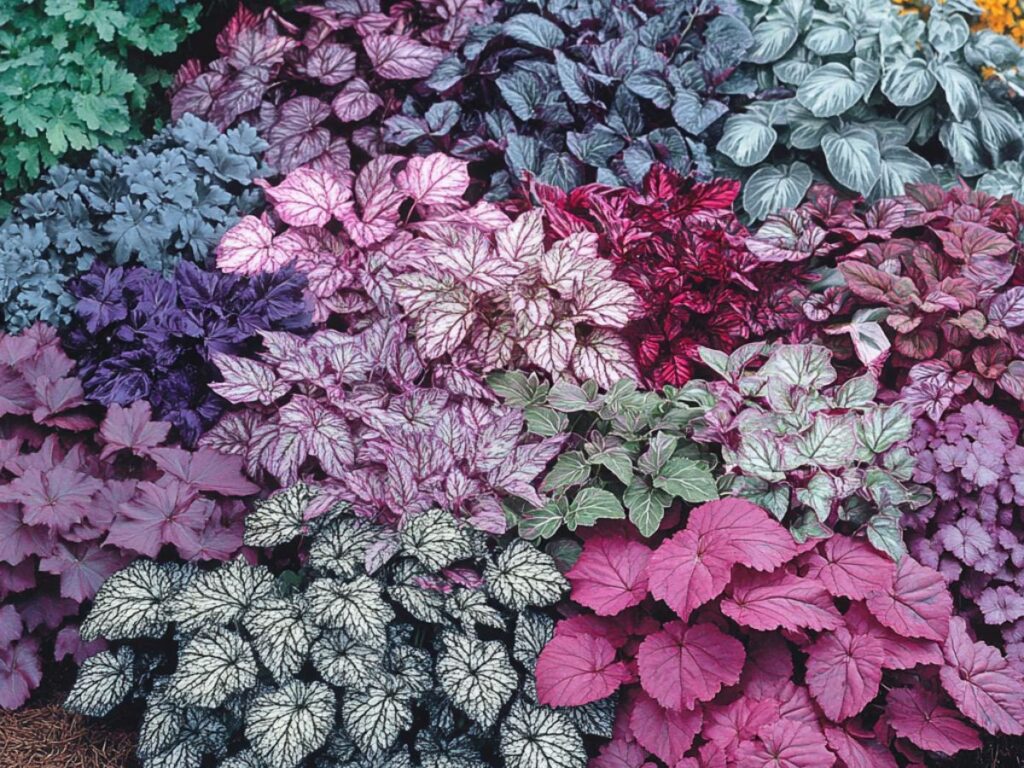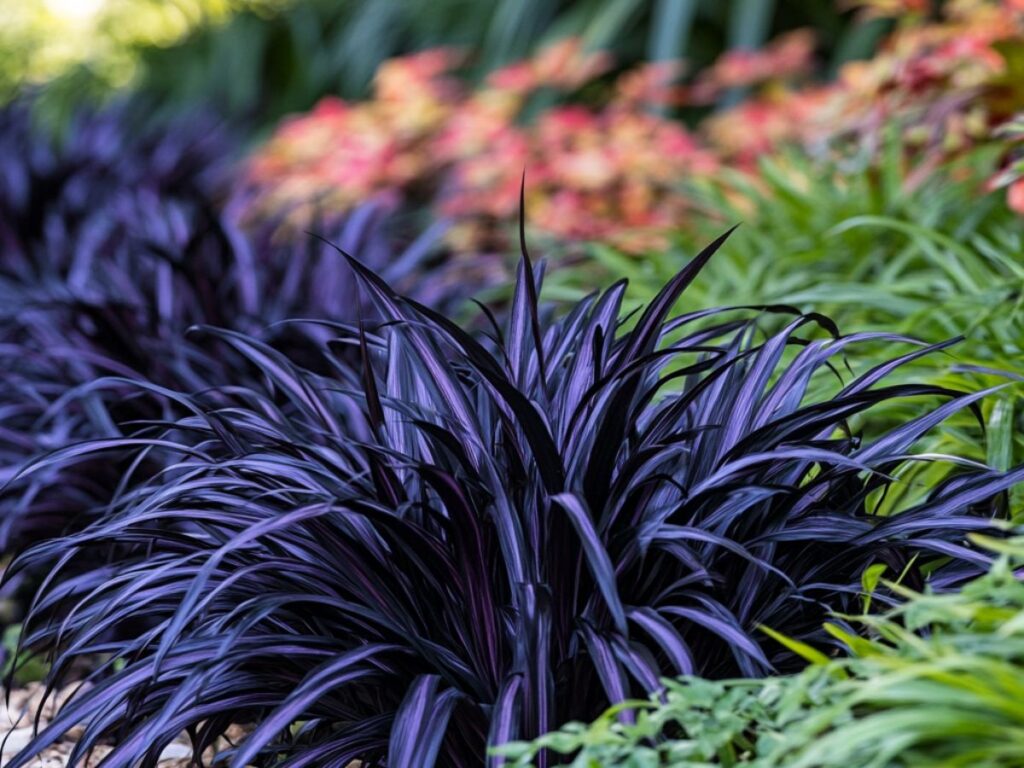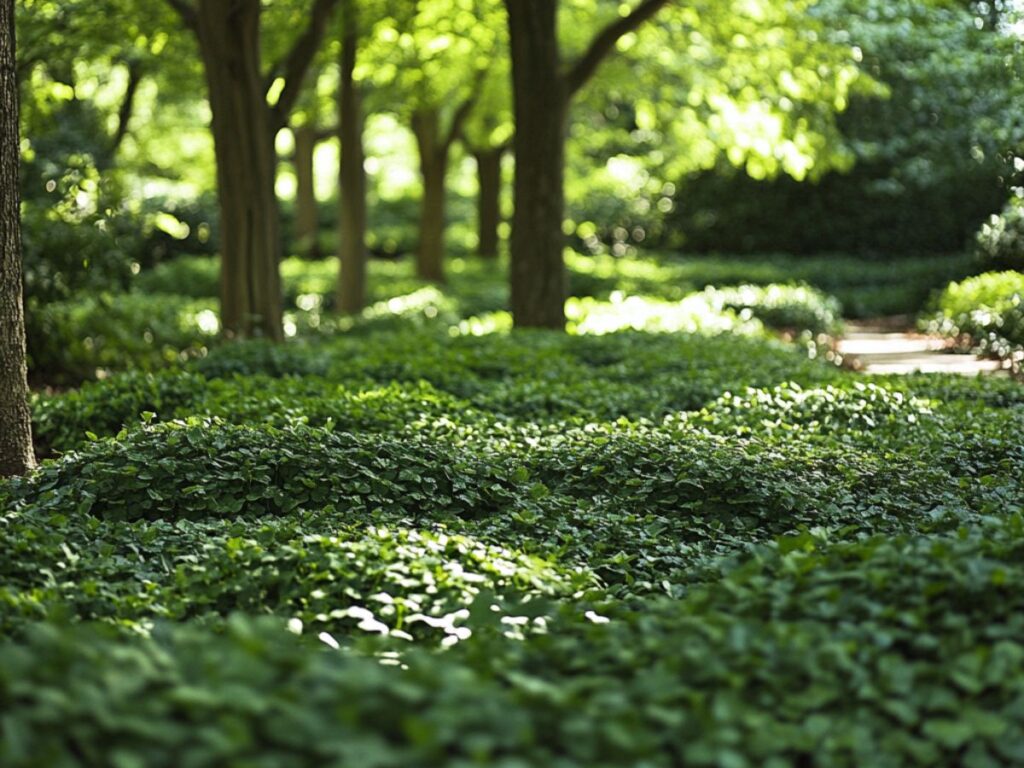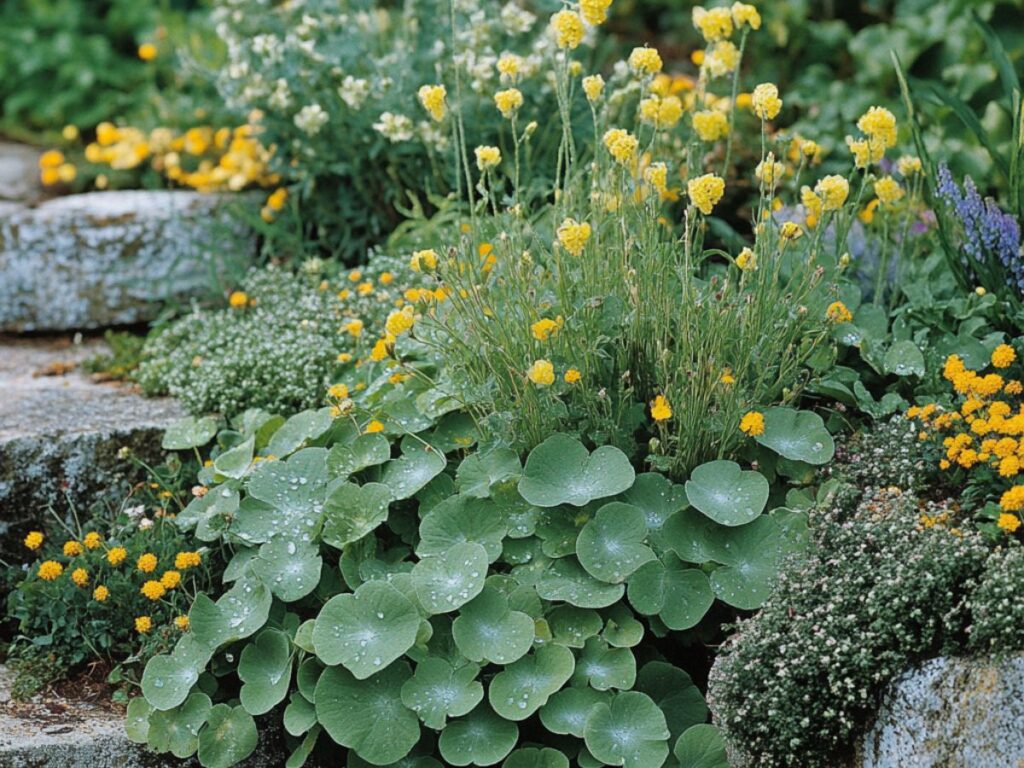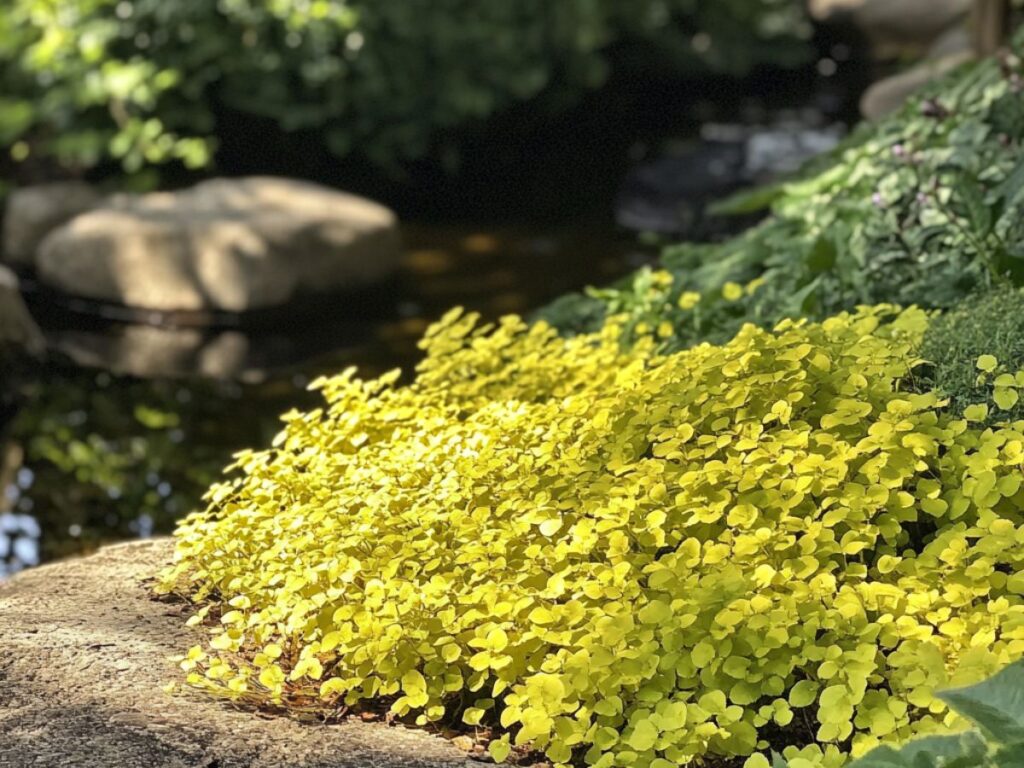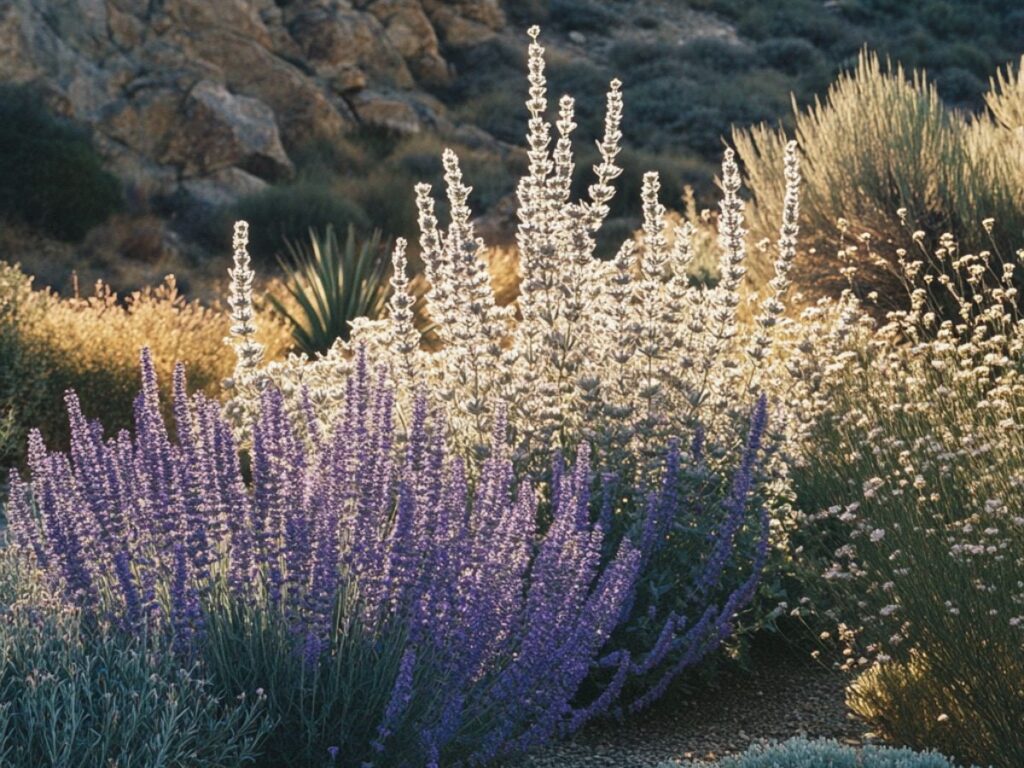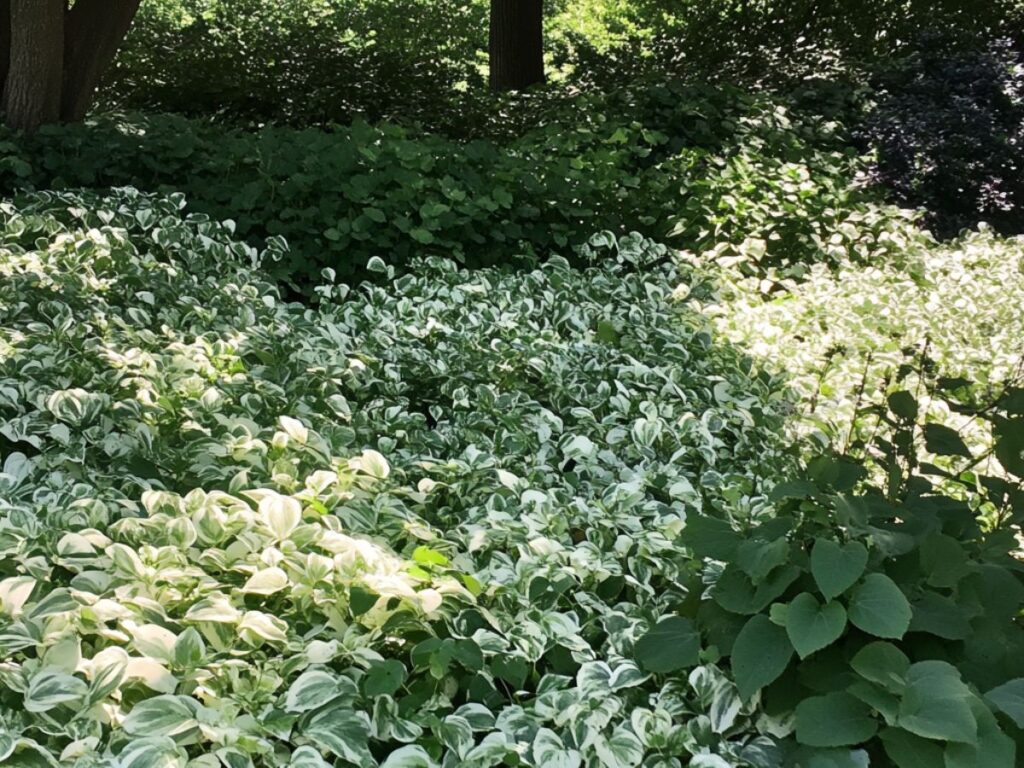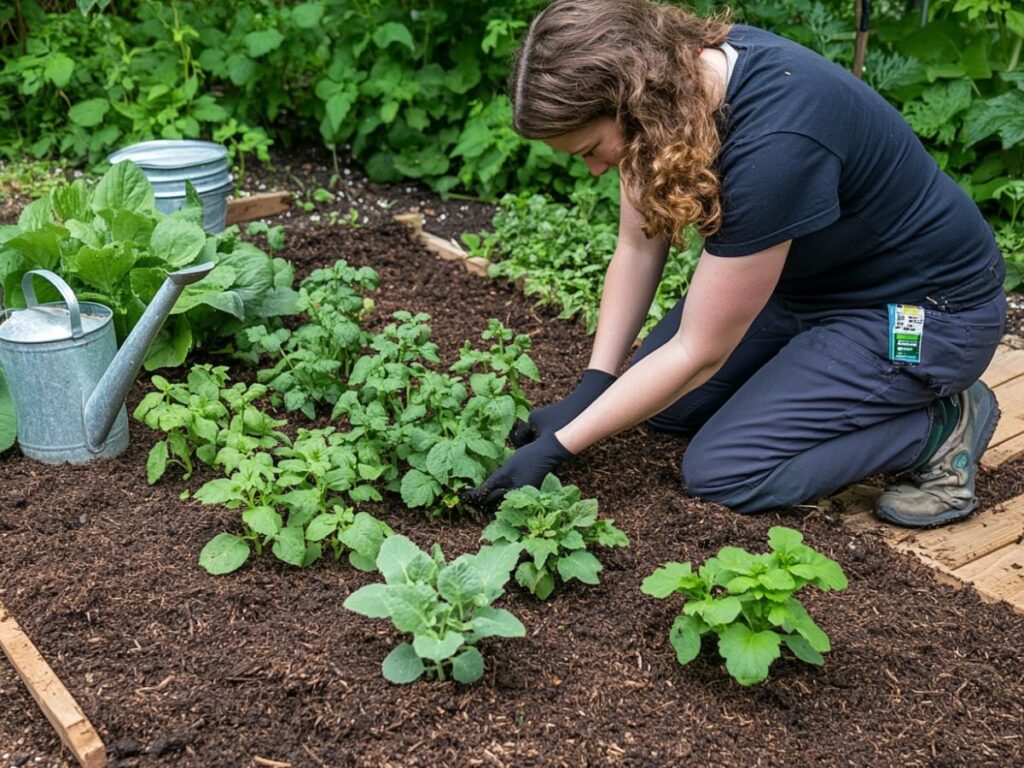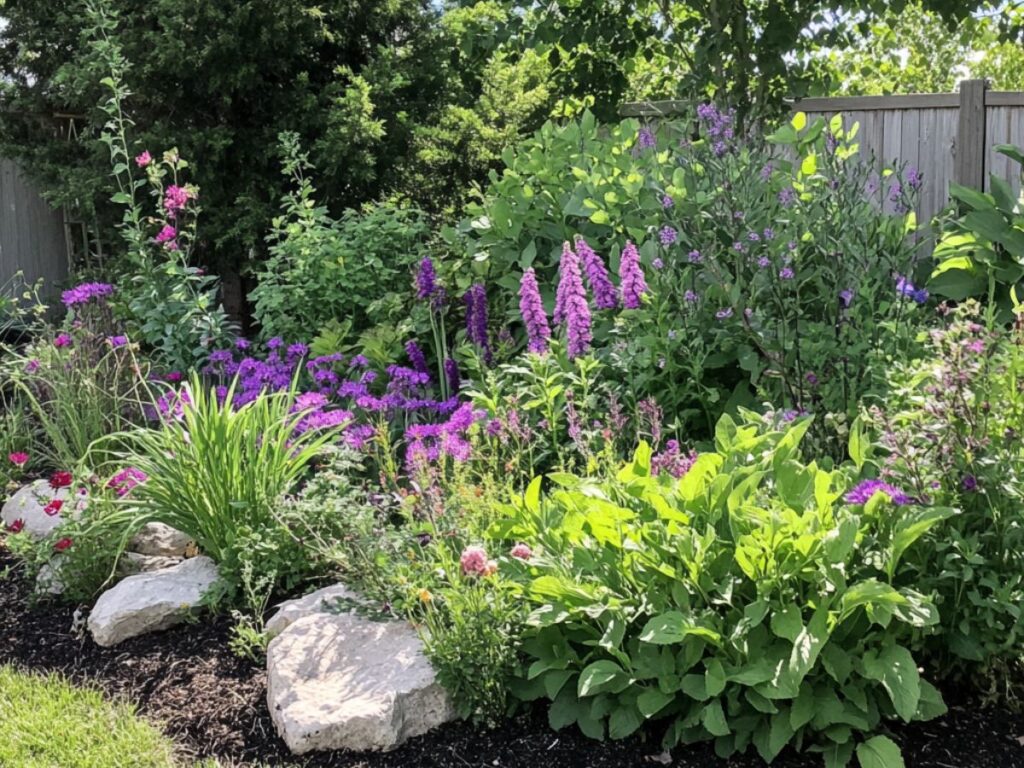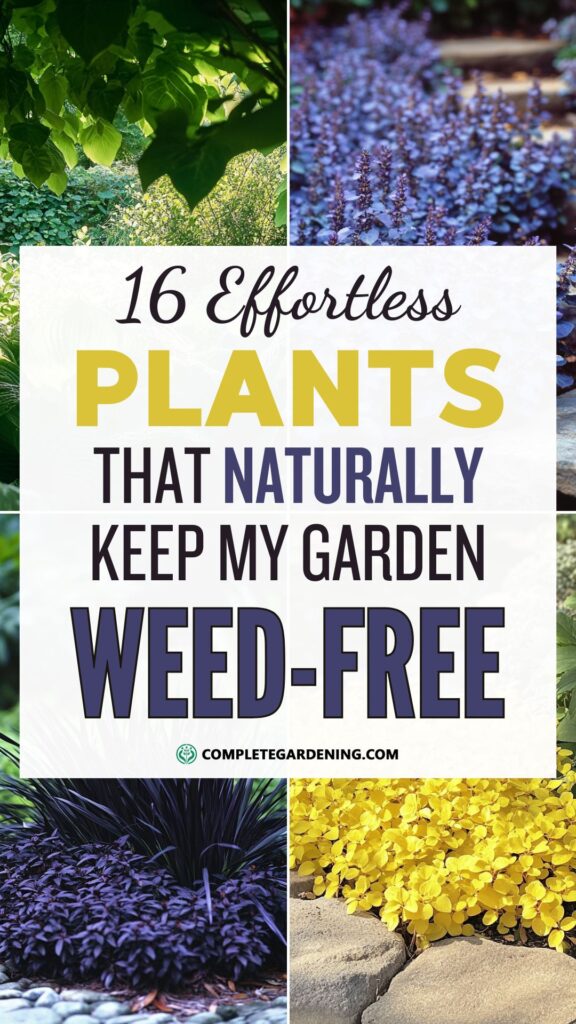Weeds have this relentless quality to them, don’t they? They’re the silent invaders, springing up where they’re least wanted, competing with your favorite plants for nutrients, water, and space.
And yet, the secret to fighting them might be simpler than you think: pick the right plants, and the weeds hardly get a chance to grow.
By using ground covers, perennials, and other easy plants that naturally shade or choke out weeds, we can make gardens not only lower-maintenance but far healthier and better looking.
So here’s a list of 16 easy plants that keep weeds away – no chemicals, no fuss, just good plant choices that work with nature.
1. Creeping Thyme: Tiny but Mighty
Creeping thyme is a fantastic ground cover, forming a dense mat that weeds find hard to break through. It’s also aromatic, so brushing against it releases a pleasant herbal scent.
This low-grower is easy to maintain, and once established, it requires very little water. Plus, it flowers, attracting pollinators and giving you a beautiful splash of purple.
2. Sweet Woodruff: The Gentle Blanket
Sweet woodruff is a shade-loving ground cover known for its small white flowers and sweet smell.
It spreads quickly but is easy to manage, and its dense mat of foliage makes it difficult for weeds to get a foothold. It does best in moist, shady spots, making it perfect for under trees or in north-facing beds.
3. Lamb’s Ear: Soft and Sturdy
With its thick, fuzzy leaves, lamb’s ear creates a soft, silvery ground cover that’s tough for weeds to penetrate.
This plant grows low and dense, forming a protective shield against invaders. It’s particularly suited for dry, sunny spots and requires minimal water once established. Lamb’s ear is ideal for borders and pathways, adding both texture and functionality.
4. Sedum: The Water-Wise Wonder
Sedums come in countless varieties and can thrive in dry conditions, which also makes them a great choice for weed control. These succulents have a spreading habit and come in low-growing varieties that create a ground-hugging carpet.
Their thick leaves store water, which means they need little upkeep and can crowd out most weeds without breaking a sweat.
5. Ajuga (Bugleweed): The Colorful Combatant
Ajuga, or bugleweed, is an easy-to-grow ground cover with rich purple, blue, or green leaves and small spiky flowers.
It thrives in sun or shade and can handle foot traffic, making it ideal for pathways or areas where other plants struggle. Once it fills in, ajuga forms a tight mat that resists weeds and adds a beautiful color contrast to your garden.
6. Hosta: The Shade-Loving Powerhouse
Hostas are a favorite for shady gardens, but they’re also incredibly effective weed suppressors. Their large leaves form a canopy that blocks sunlight from reaching the ground, making it nearly impossible for weeds to grow.
With their broad range of colors and leaf textures, they’re also visually versatile, adding structure and beauty to garden beds.
7. Vinca Minor (Periwinkle): The All-Terrain Hero
Periwinkle is a hardy ground cover that thrives in partial shade, with glossy green leaves and small blue or purple flowers.
It spreads easily, covering ground quickly and shading out weeds. It’s particularly useful in tricky areas like slopes or under shrubs where other plants may struggle. Once it’s established, it requires very little maintenance.
8. Coral Bells (Heuchera): The Colorful Guard
Coral bells are prized for their colorful foliage, with leaves that come in shades of burgundy, green, purple, and even silver.
Not only are they visually striking, but they also grow dense enough to keep weeds at bay. Coral bells thrive in partial shade and are incredibly hardy, making them an easy choice for adding both beauty and function to a garden.
9. Black Mondo Grass: Unusual and Unyielding
This dark-leafed grass isn’t your typical ground cover, but it’s a fantastic weed barrier. Its dense, low-growing habit helps block weeds, while its unique black foliage adds an exotic look to garden beds.
Black mondo grass does well in both sun and partial shade, making it versatile, and once established, it’s easy to care for.
10. Pachysandra: The Shade Warrior
Pachysandra is another shade-loving ground cover that forms a dense mat, effectively suppressing weeds.
It has glossy green leaves and small, subtle white flowers. Pachysandra is ideal for areas under trees or in deep shade where grass struggles. It requires minimal attention once established, just an occasional trim to keep it tidy.
11. Ice Plant: Bright and Resilient
The ice plant is a succulent that loves the sun and needs very little water. Its spreading habit and low growth make it excellent at out-competing weeds.
With its bright, daisy-like flowers in shades of pink, purple, and yellow, it brings vibrant color to sunny spots. Ice plants are perfect for hot, dry climates and do best in well-drained soil.
12. Japanese Forest Grass: Shady Elegance
If you have a shaded area, Japanese forest grass is an excellent choice for keeping weeds at bay. This ornamental grass grows in clumps and spreads slowly, creating a weed-resistant carpet over time.
It’s particularly beautiful in shaded borders or woodland gardens, with its graceful, arching leaves adding texture and movement.
13. Lady’s Mantle: Elegant and Effective
Lady’s mantle is a charming perennial with soft, scalloped leaves and delicate greenish-yellow flowers. It’s ideal for both sunny and partially shaded areas, and it spreads steadily, covering bare soil and out-competing weeds.
Lady’s mantle is low-maintenance and looks great in cottage gardens, where it adds a touch of old-fashioned elegance.
14. Creeping Jenny: The Bright Sprawler
Creeping Jenny is a vigorous ground cover that thrives in sun or shade. Its round, golden leaves form a thick mat that blocks weeds, and its bright color adds a cheerful touch to garden beds.
Be mindful of its spreading habit, as it can be quite aggressive, but in the right spot, it’s an easy, low-maintenance choice that keeps weeds in check.
15. Russian Sage: The Aromatic Guard
Russian sage is an upright perennial with silvery foliage and tall spikes of lavender-blue flowers. It thrives in sunny, dry areas and creates a dense cover that weeds can’t easily invade.
Its height and texture add drama to garden beds, and its aromatic leaves make it a deer-resistant choice, adding both beauty and practicality.
16. Bishop’s Weed: The Tough Competitor
Bishop’s weed, also known as goutweed, is a hardy ground cover with variegated leaves that brighten up shady areas.
It’s a vigorous spreader, making it effective for large areas where you want to keep weeds out. Its resilience can be both a blessing and a curse, so it’s best suited to areas where you want a strong, easy-maintenance plant that can truly hold its own.
Planting and Care Tips for a Weed-Free Garden
Preparation is Key: Before planting any of these ground covers or perennials, prepare the soil by removing existing weeds. Adding a layer of mulch helps as well, giving the new plants a head start in shading out weeds.
Mindful Watering: While many of these plants are drought-tolerant, they will benefit from regular watering as they get established. After that, you can reduce watering, especially for the succulents and tough perennials on this list.
Spacing and Placement: Plant each of these ground covers according to their ideal spacing requirements. Close spacing encourages quicker coverage but may require occasional thinning to prevent overcrowding.
Prune Strategically: Some of these plants, like creeping Jenny and bishop’s weed, can be aggressive. Occasional pruning will keep them in check and ensure they don’t encroach on neighboring plants.
Watch for Invasive Qualities: A few of these plants are known to spread vigorously, which is excellent for weed control but can be a hassle if they start to overtake other areas of the garden.
Plan for this by using borders or planting them in spaces where you don’t mind them spreading.
Why These Plants Work
The secret to these plants’ effectiveness lies in how they interact with their environment.
Each of these options either shades the soil (blocking the sunlight that weeds need), competes aggressively for resources (so weeds get starved out), or forms such a dense mat that there’s simply no room left for anything else to grow.
This approach is nature’s own weed control method, making it both eco-friendly and less labor-intensive than constantly weeding or using herbicides.
Choosing plants that complement each other, combining ground covers with larger perennials, creates a layered effect where every inch of soil is covered.
In a sense, you’re replicating the balance you’d find in a forest or meadow, where plant diversity naturally keeps invasive species in check.
Using these 16 easy plants to keep your garden weed-free is about more than just minimizing work. It’s about working with nature’s principles instead of against them.
With a thoughtful mix of ground covers and hardy perennials, you’re essentially designing a garden that’s self-sustaining.
By covering the ground with plants that fill every niche, you create a living mulch that blocks weeds, conserves moisture, and looks stunning year-round.
The next time weeds pop up in a bare spot, consider it an invitation to plant something new.

